Benzaldehyde,2,4-dichloro-, oxime
Modify Date: 2024-01-02 12:05:41
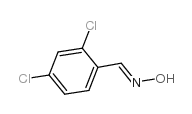
Benzaldehyde,2,4-dichloro-, oxime structure
|
Common Name | Benzaldehyde,2,4-dichloro-, oxime | ||
|---|---|---|---|---|
| CAS Number | 56843-28-8 | Molecular Weight | 190.02700 | |
| Density | 1.38g/cm3 | Boiling Point | 271.3ºC at 760mmHg | |
| Molecular Formula | C7H5Cl2NO | Melting Point | 134ºC | |
| MSDS | N/A | Flash Point | 117.9ºC | |
| Name | 2,4-dichlorobenzaldehyde oxime |
|---|---|
| Synonym | More Synonyms |
| Density | 1.38g/cm3 |
|---|---|
| Boiling Point | 271.3ºC at 760mmHg |
| Melting Point | 134ºC |
| Molecular Formula | C7H5Cl2NO |
| Molecular Weight | 190.02700 |
| Flash Point | 117.9ºC |
| Exact Mass | 188.97500 |
| PSA | 32.59000 |
| LogP | 2.80150 |
| Index of Refraction | 1.575 |
Synonym: Section 2 - COMPOSITION, INFORMATION ON INGREDIENTS
Risk Phrases: 36/37/38 Section 3 - HAZARDS IDENTIFICATION EMERGENCY OVERVIEW
Irritating to eyes, respiratory system and skin. Potential Health Effects Eye: Causes eye irritation. Skin: Causes skin irritation. May be harmful if absorbed through the skin. Ingestion: May cause irritation of the digestive tract. May be harmful if swallowed. Inhalation: Causes respiratory tract irritation. May be harmful if inhaled. Chronic: Not available. Section 4 - FIRST AID MEASURES Eyes: Flush eyes with plenty of water for at least 15 minutes, occasionally lifting the upper and lower eyelids. Get medical aid. Skin: Get medical aid. Flush skin with plenty of water for at least 15 minutes while removing contaminated clothing and shoes. Ingestion: Get medical aid. Wash mouth out with water. Inhalation: Remove from exposure and move to fresh air immediately. If not breathing, give artificial respiration. If breathing is difficult, give oxygen. Get medical aid. Notes to Physician: Treat symptomatically and supportively. Section 5 - FIRE FIGHTING MEASURES General Information: As in any fire, wear a self-contained breathing apparatus in pressure-demand, MSHA/NIOSH (approved or equivalent), and full protective gear. Extinguishing Media: Use water spray, dry chemical, carbon dioxide, or chemical foam. Section 6 - ACCIDENTAL RELEASE MEASURES General Information: Use proper personal protective equipment as indicated in Section 8. Spills/Leaks: Vacuum or sweep up material and place into a suitable disposal container. Section 7 - HANDLING and STORAGE Handling: Avoid breathing dust, vapor, mist, or gas. Avoid contact with skin and eyes. Storage: Store in a cool, dry place. Store in a tightly closed container. Section 8 - EXPOSURE CONTROLS, PERSONAL PROTECTION Engineering Controls: Facilities storing or utilizing this material should be equipped with an eyewash facility and a safety shower. Use adequate ventilation to keep airborne concentrations low. Exposure Limits CAS# 56843-28-8: Personal Protective Equipment Eyes: Not available. Skin: Wear appropriate protective gloves to prevent skin exposure. Clothing: Wear appropriate protective clothing to prevent skin exposure. Respirators: Follow the OSHA respirator regulations found in 29 CFR 1910.134 or European Standard EN 149. Use a NIOSH/MSHA or European Standard EN 149 approved respirator if exposure limits are exceeded or if irritation or other symptoms are experienced. Section 9 - PHYSICAL AND CHEMICAL PROPERTIES Physical State: Solid Color: off-white Odor: Not available. pH: Not available. Vapor Pressure: Not available. Viscosity: Not available. Boiling Point: Not available. Freezing/Melting Point: 134 - 136 deg C Autoignition Temperature: Not available. Flash Point: Not available. Explosion Limits, lower: Not available. Explosion Limits, upper: Not available. Decomposition Temperature: Solubility in water: Specific Gravity/Density: Molecular Formula: C7H5Cl2NO Molecular Weight: 190.03 Section 10 - STABILITY AND REACTIVITY Chemical Stability: Not available. Conditions to Avoid: Incompatible materials. Incompatibilities with Other Materials: Oxidizing agents, reducing agents, bases, acid chlorides. Hazardous Decomposition Products: Hydrogen chloride, nitrogen oxides, carbon monoxide, carbon dioxide. Hazardous Polymerization: Has not been reported Section 11 - TOXICOLOGICAL INFORMATION RTECS#: CAS# 56843-28-8: CU5610500 LD50/LC50: Not available. Carcinogenicity: 2,4-Dichlorobenzaldehyde oxime - Not listed by ACGIH, IARC, or NTP. Other: See actual entry in RTECS for complete information. Section 12 - ECOLOGICAL INFORMATION Section 13 - DISPOSAL CONSIDERATIONS Dispose of in a manner consistent with federal, state, and local regulations. Section 14 - TRANSPORT INFORMATION IATA No information available. IMO No information available. RID/ADR No information available. Section 15 - REGULATORY INFORMATION European/International Regulations European Labeling in Accordance with EC Directives Hazard Symbols: XI Risk Phrases: R 36/37/38 Irritating to eyes, respiratory system and skin. Safety Phrases: S 26 In case of contact with eyes, rinse immediately with plenty of water and seek medical advice. S 37/39 Wear suitable gloves and eye/face protection. WGK (Water Danger/Protection) CAS# 56843-28-8: No information available. Canada None of the chemicals in this product are listed on the DSL/NDSL list. CAS# 56843-28-8 is not listed on Canada's Ingredient Disclosure List. US FEDERAL TSCA CAS# 56843-28-8 is not listed on the TSCA inventory. It is for research and development use only. SECTION 16 - ADDITIONAL INFORMATION N/A |
CHEMICAL IDENTIFICATION
HEALTH HAZARD DATAACUTE TOXICITY DATA
|
| Hazard Codes | Xi |
|---|---|
| Risk Phrases | R36/37/38 |
| Safety Phrases | S26-S37/39 |
|
~88% 
Benzaldehyde,2,... CAS#:56843-28-8 |
| Literature: Journal of Organic Chemistry, , vol. 78, # 17 p. 8386 - 8395 |
| Precursor 1 | |
|---|---|
| DownStream 10 | |
| 2,4-dichloro-benzaldehydoxime |
| 2,4-dicholorobenzaldehydeoxime |
| 2,4-dichlorobenzadehyde oxime |
| 2,4-dichloro-benzaldehyde-oxime |
| HONCHC6H3Cl2-2,4 |
| 2,4-Dichlor-benzaldehyd-oxim |

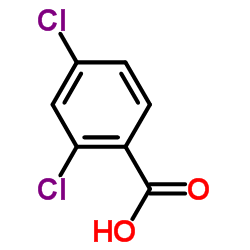 CAS#:50-84-0
CAS#:50-84-0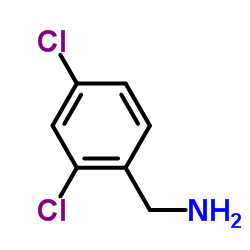 CAS#:95-00-1
CAS#:95-00-1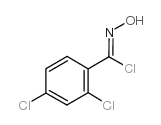 CAS#:29203-60-9
CAS#:29203-60-9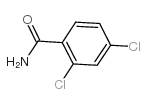 CAS#:2447-79-2
CAS#:2447-79-2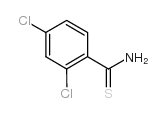 CAS#:2775-38-4
CAS#:2775-38-4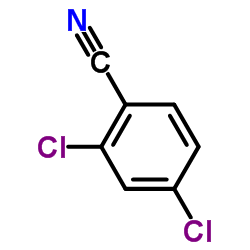 CAS#:6574-98-7
CAS#:6574-98-7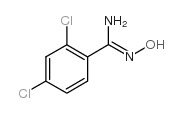 CAS#:22179-80-2
CAS#:22179-80-2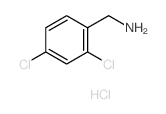 CAS#:73728-66-2
CAS#:73728-66-2 CAS#:5301-00-8
CAS#:5301-00-8